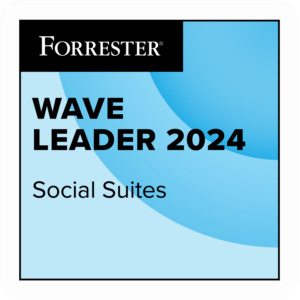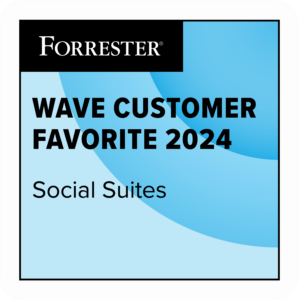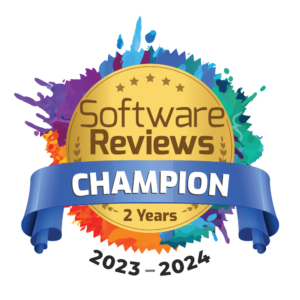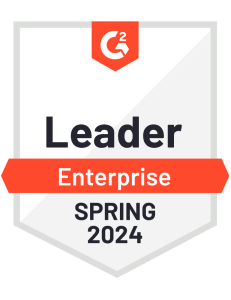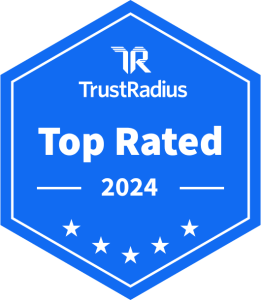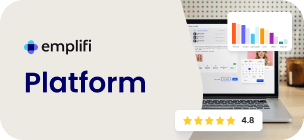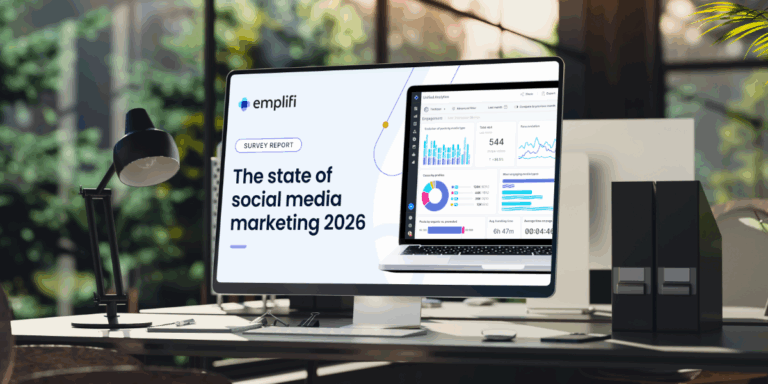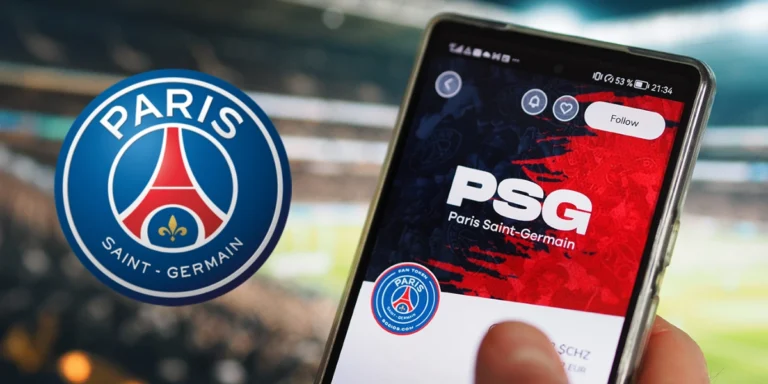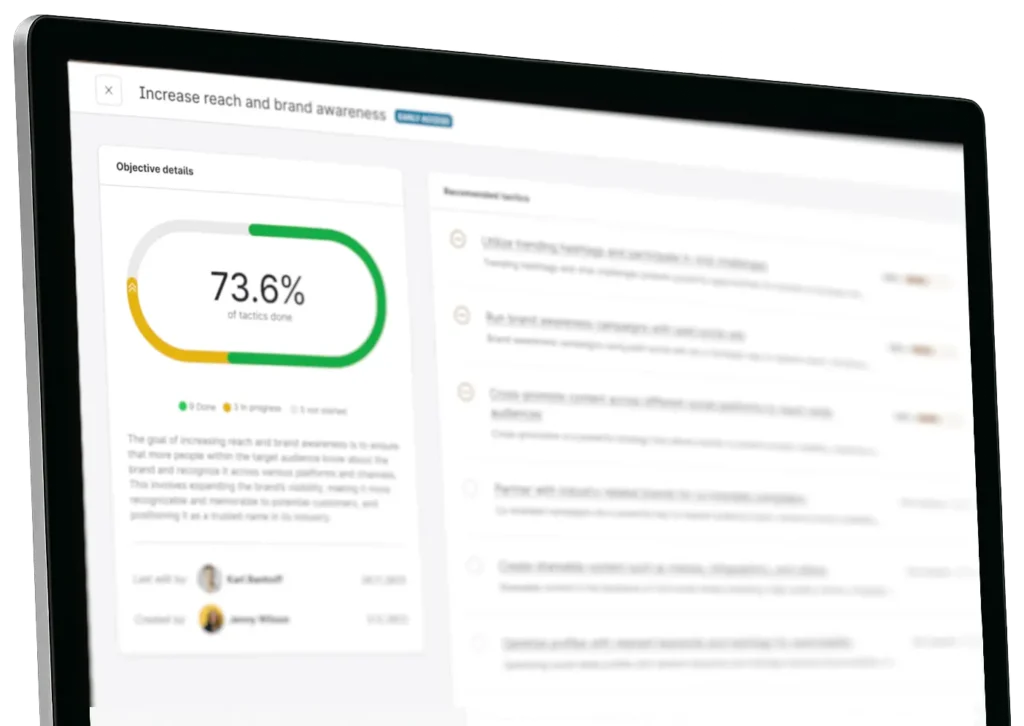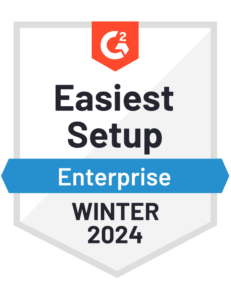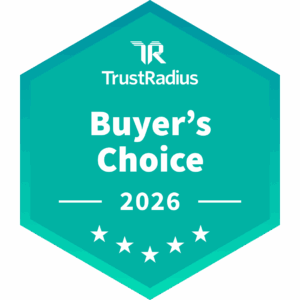A social media manager’s job is never done. Even when you’ve got your brand socials up and running, there are always ways to improve and get closer to your goals.
That’s where social media optimization (SMO) comes in.
What exactly is social media optimization?
First, let’s define social media optimization. It’s the process of fine-tuning your social media content and profiles to increase visibility and engagement.
Say your brand’s Instagram account is posting four times a week and getting hundreds of likes, but very few comments, shares, reposts, and follows – indicating weak engagement. Your social media optimization process would focus on ways to increase engagement on Instagram so that more potential customers feel compelled to interact with your brand.
Ultimately, social media optimization is about getting closer to your marketing goals by tweaking your approach. Think about what goals you’re reaching for, whether it’s more followers, engagement, more leads from ideal customers, or better ROI on your social media budget.
The more specific your goal for social media optimization, the better your outcome. It isn’t about knocking down your existing social media content strategy. Rather, it helps you get the most impact out of your content and resources.
How can I optimize content to improve social media performance?
There are a few key elements of your content to optimize in order to up-level your social media efforts.
- Format: Even if your brand messaging is the same across platforms, ensure that your formatting is customized for each platform’s requirements and algorithms. For example, your graphics should be formatted differently for Instagram and Facebook, and you can’t include clickable links in Instagram captions while you can in Facebook posts.
- Hook: Your posts need to capture attention fast. Obsess over your hooks, a.k.a your opening line in text posts and the first 3 seconds of videos. That’s about how long you have to stop the scroll and get someone to engage.
- Trends: Incorporate trending topics and keywords, but only when they serve your brand goals. It’s a good idea to track trends so you can quickly jump into them if they align with your social media style guide and goals. But not every trend will be right for your brand, and it’s fine to sit on the sidelines if that’s the case.
- Shareability: Make content irresistible to share. The more followers share your content, the more your organic reach will grow. Depending on the platform, you can ask followers to add their photos, stitch your video, or share their own content with a campaign hashtag. Make it fun for people to interact with your brand account.
- Timing: Find optimal posting times. If your posts are missing your audience, you won’t see engagement. Factor your audience geography into your posting times, and be sure you’re hitting the right time zones. The best times will depend on the platform and your audience’s habits.

What about profiles? What social media optimization plays work there?
Beyond optimizing the content of each post, there are ways to ensure your entire account works as hard as it can to attract followers and engagement.
- Use strategic keywords in your profile. Every platform is different, but they all have areas to add a description and a link. Include your target keywords in your description, and include compelling CTAs with your links.
- Ensure consistent brand naming and hashtags across platforms. While your social media handles might differ by necessity, you can update your display name to be the same across all platforms. You don’t want to be “YourBrandOfficial” in one place and ‘YourBrandInc” in another. Make sure your brand and campaign hashtags are consistent as well.
- Use trackable links with proper UTM parameters. UTM links contain specific tracking elements. They allow you to easily see where your website traffic is coming from in Google Analytics. (The acronym stands for “Urchin Tracking Module,” named after a company that Google acquired in 2005 that became the precursor of Google Analytics.) You can use Google’s free tool to create these.
- Optimize images with alt text and metadata. For both accessibility and SEO purposes, include alt text for every image. Alt text is a simple description of the image that allows people using screen readers to understand the visuals in your content. Get as specific as possible when writing alt text. Instead of “Woman with computer,” try “A woman in a blazer is focused on her laptop; there’s a cup of coffee on her wood desk.”
Here’s how to add alt text on a few common platforms:
Instagram
- Upload your photo as usual
- Before posting, tap “Advanced Settings” at the bottom
- Select “Write Alt Text”
- Write a clear description of what’s in the image
- Save and continue posting
Facebook
- Upload your image
- Click the “Edit” button on the image
- Select “Alternative Text”
- Enter your description
- Save changes
X/Twitter
- Upload your image
- Click the “+ALT” button that appears
- Type your description
- Click “Save” and continue tweeting
LinkedIn
- Begin creating a post with an image
- Click on the image after uploading
- Select “Add alt text”
- Enter your description
- Click “Save”
Metadata is information embedded in the image file itself before uploading. Here’s how to add it:
- On desktop, right-click your image file
- Select “Properties” (Windows) or “Get Info” (Mac)
- Add information to fields like Title, Subject, Tags, Comments
- Save changes before uploading to social platforms.
How do I determine which social media platforms to optimize?
While it may be tempting to pour your resources into the worst-performing platform, that isn’t always the best choice. A better approach is to optimize the channels where your target audience spends the most time.
Emplifi survey data shows vast differences along generational lines regarding platform preference and behavior. Consider the following generational preferences when considering where your audience hangs out.
Facebook
- Lowest adoption among Gen Z (58% use at least twice/week) compared to other generations
- Strong usage among older generations (Millennials 84%, Gen X 88%, Boomers 85%)
- Despite lower adoption, active Gen Z users spend significant time on the platform (7.38 hours on weekends, 6.95 hours on weekdays)
Instagram
- Highest adoption among Gen Z (78%)
- Strong usage among Millennials (62%) and Gen X (60%)
- Lower but still significant adoption among Boomers (44%)
- Heavy time investment from Gen Z users (7.68 hours/weekend day, 6.85 hours/weekday)
TikTok
- Strong Gen Z adoption (66%)
- Moderate adoption among Millennials (53%) and Gen X (50%)
- Lowest adoption among Boomers (26%)
- Highest time investment across all platforms for Gen Z (8.13 hours/weekend day, 7.28 hours/weekday)
Snapchat
- Strongest adoption among Gen Z (58%)
- Moderate adoption among Millennials (41%)
- Lower adoption among Gen X (28%) and Boomers (13%)
Here’s a rubric to help you figure out the best places to allocate your resources. For each platform, choose the option that best describes how you see each element.
Audience alignment
How well does the platform’s user base match your target audience?
- Almost no overlap with target audience
- Moderate overlap with some target segments
- Strong overlap with ideal customer profile
Engagement potential
Is your content generating meaningful engagement on this platform?
- Minimal engagement
- Average steady engagement, that’s not trending up or down
- Strong engagement, trending upwards
Resource requirements
How resource-intensive is creating content for this platform?
- Highly demanding (3-5 hours or more per post, advanced skills)
- Moderately demanding (1-3 hours per post, intermediate skills)
- Efficient & manageable (30-60 minutes per post or less, basic skills)
Business objective alignment
How well does the platform support your specific business goals?
- Limited to no support for business objectives
- Moderate ability to serve business objectives
- Strong alignment with most business objectives
Conversion potential
How effectively does platform engagement translate into desired actions?
- It’s difficult to drive conversions on this platform
- Average conversion potential with standard features
- Strong conversion potential with multiple pathways
Competitive landscape
What is your opportunity to stand out among competitors?
- Saturated with direct competitors dominating
- Moderately competitive with some opportunity gaps
- Limited competition with several opportunity areas
Growth trajectory
What is the platform’s projected growth and longevity?
- Stagnant or declining, with uncertain future
- Stable but not growing significantly
- Moderate to rapid growth with strong future outlook
Analytics capability
How robust are the platform’s measurement tools?
- Basic metrics with few customization options or limited insights
- Standard analytics covering core metrics
- Advanced analytics with detailed insights and integration
Scoring guide
- Add score for each category (1, 2, or 3 points corresponding to your answer)
- Maximum possible score: 24 points
- Minimum possible score: 8 points
- Recommended thresholds:
- 20-24: Primary focus platforms (invest heavily)
- 15-19: Secondary platforms (moderate investment)
- 10-14: Experimental platforms (limited investment)
- 9 or below: Not recommended (minimal or no investment)
Interactive worksheet template
Platform: ______________
Audience alignment: ___
Engagement potential: ___
Resource requirements: ___
Business objective alignment: ___
Conversion potential: ___
Competitive landscape: ___
Growth trajectory: ___
Analytics capability: ___
TOTAL SCORE: ___/24
Choose two or three platforms with the highest scores to focus your social media optimization efforts.
How do I determine what social media content to optimize?
Analyze at least 3 months of data to determine how your current social media strategy is performing. Develop. Here’s how to get started:
- Conduct an audit of your current social platforms. Document follower growth rate, engagement rate, and any other KPIs that are relevant to your goals.
- Analyze the best- and worst-performing content. What do the top posts have in common? Can you pinpoint why the low-performing content doesn’t resonate with your audience? It’s OK if you don’t know the answer, but try to determine common denominators.
- Review your engagement metrics against industry benchmarks. Are you outperforming your competition? Falling behind? Pinpoint where your accounts stand.
- Identify gaps in your current approach compared to competitors. Is there a type of content or topic that your competitors regularly include that you’re not using?
Make sure that you’re utilizing the types of content that encourage interaction. Polls on LinkedIn, TikTok videos that set up Duets, quizzes on Instagram Stories, and Facebook image carousels are all examples of content that organically fosters engagement from your followers. Instagram Reels in particular have become a dominant content format, with a 2.2% video reach engagement rate in 2024, outpacing TikTok’s average reach engagement rate of 1.7%. If you’re not already investing in Reels, it’s a great format to try out.
You can also try running a social media contest, putting out a call for UGC, and sharing discounts and deals. Emplifi survey data shows that 60% of frequent social media users follow brands for discounts and promotions.
And when it comes to UGC, you can use a social listening tool to identify brand mentions and then repost that content to your feed. The more you can promote UGC and respond to creators who boost your brand, the more engagement your post and theirs will get.
How do I create a social media optimization strategy?
The key to an effective social media optimization strategy is focusing your efforts where they’ll make the most impact. Don’t try to do everything at once.
Start by defining clear, measurable objectives that directly support your business goals. Whether you’re aiming to increase brand awareness, drive website traffic, or generate leads, your social media optimization strategy should have specific targets with numbers attached (e.g., “increase click-through rate by 15% in 90 days”).
Choose a different goal for each platform. Your goals for TikTok are likely different from your goals for LinkedIn.
Next, assess where your engagement is already spiking and try to increase from there. Identify the patterns and incorporate them into your content calendar. Ensure you have a mix of planned evergreen content (80%), with room for responsive topical content (20%). This mix ensures consistency – but also the flexibility to join trending conversations as they happen.
Finally, establish your measurement framework. Identify 3-5 KPIs for each platform that align with your objectives. Resist the temptation to track everything. Focus on metrics that directly reflect progress toward your goals. For example, seeing thousands of reactions is great because your existing audience is engaged, but if your goal is to grow your audience, track new followers.
Use a unified social media analytics tool to see data and analytics across platforms in one place. This streamlined view will save your team from the time-consuming process of switching between platforms to gather data. A unified dashboard also allows you to deploy new content and optimization tactics across several platforms at once.
How should I balance organic and paid social media optimization efforts?
Your organic and paid social media are complementary forces that amplify each other, not separate entities. Your highest-engaging organic posts often make the best candidates for amplification through paid spend, and you can lead with audience behavior rather than guesswork.
Begin with small test budgets (as little as $50-100) to validate your targeting assumptions before scaling up. Use A/B testing with different audience segments to refine your targeting parameters before committing larger budgets.
Implement detailed conversion tracking before you scale any paid campaign so that you can get a clear ROI on your ad spend.
Finally, develop a framework for evaluating when to boost content versus when to let it perform naturally. Some content types (like time-sensitive promotions or event announcements) almost always benefit from immediate paid support, while other content may need boosting only if organic performance stalls after 24-48 hours.
Remember that paid social works best when it enhances a strong organic foundation rather than compensating for weak organic content. Successful brands typically maintain a 70/30 balance of organic to paid content, adjusting seasonally based on business objectives.
What simple social media optimization improvements can I make immediately?
While social media optimization is an ongoing process, you can try a few simple things right now to help boost your social accounts.
- Review and optimize your top 10 performing posts. Apply the tactics outlined above to your best posts, republish or repurpose them, and see how they perform.
- Test one new content format on your primary platform. Try a new type of video, a different way to write captions, or a poll.
- Implement a simple engagement strategy to respond to all comments. You can use a social media management tool with easy automation to immediately make this happen.
Small wins will help motivate your team to continue optimizing.
Final thoughts on social media optimization
Social media optimization is an ongoing process of refinement that evolves by necessity. As platforms release updates and audience behavior shifts, adjust your approach.
When starting a social media optimization program, deploy one optimization technique at a time on each platform to measure what actually moves the needle. Rely on the data to lead your continuous strategy and keep testing and refining.
And remember that optimization doesn’t necessarily mean doing more. In fact, it can often mean doing less, but with greater intention and focus. As platforms shift toward quality over quantity, you’ll want to focus on creating fewer, more thoughtful pieces of content rather than maintaining a relentless posting schedule across every channel.
Trust the data, stay adaptable, and keep your audience’s needs at the center of every optimization decision you make.
